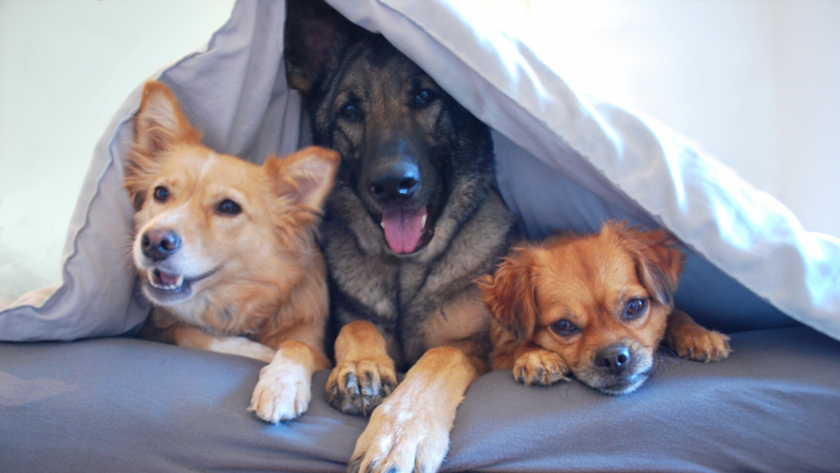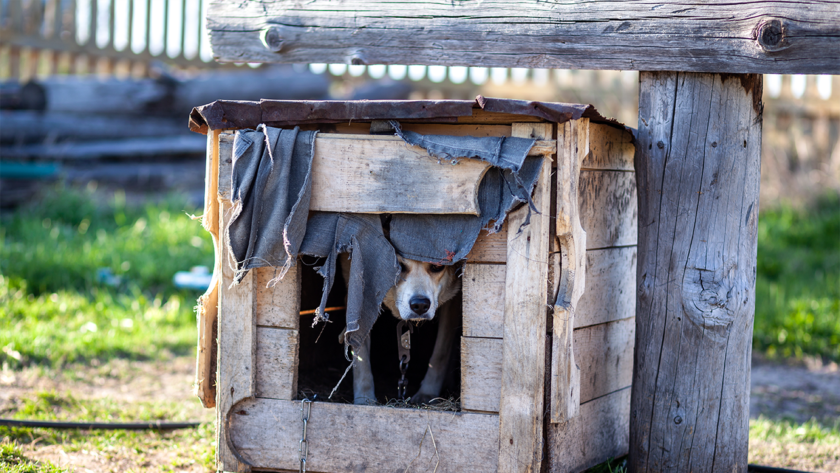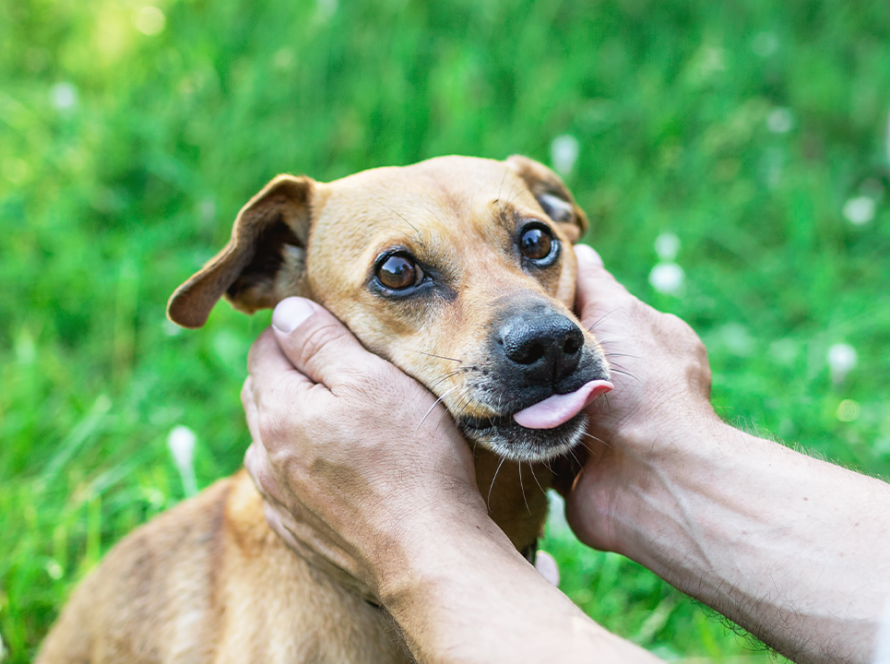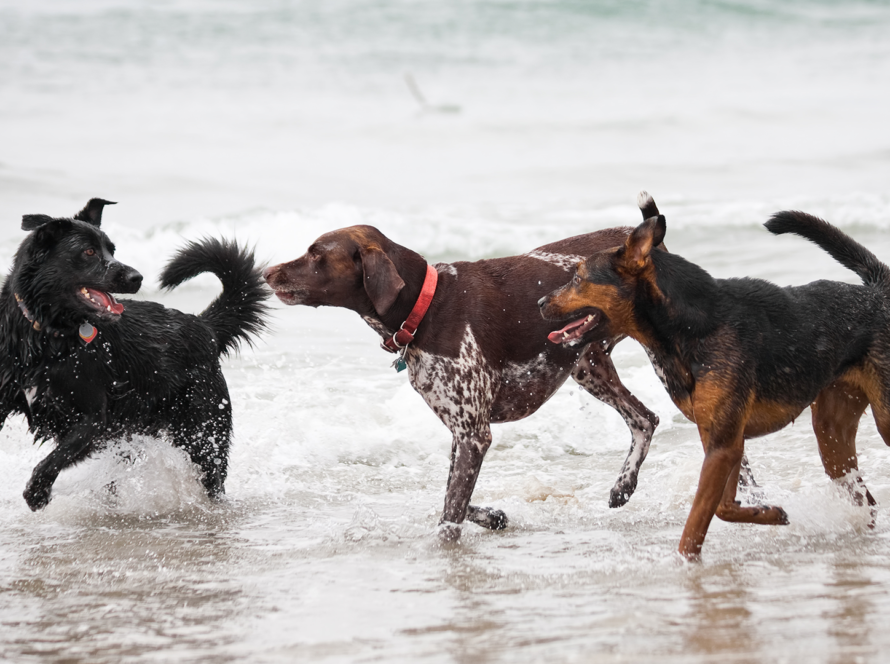For many pet parents, covering a dog’s crate may seem like a trivial task, yet its implementation is anything but. By shrouding their personal den, you’re tapping into your furry friend’s instinctual need for a secure and secluded haven. This simple, loving gesture offers profound psychological benefits that reach far beyond what the eye can see, such as reducing stress and promoting serene slumber amidst life’s hustle and bustle. It’s not just about creating a hideout; Covering a dog’s crate is about shaping a sanctuary where your dog can retreat, unwind, and feel the comforting pulse of safety.
In endeavor of crafting such a tranquil refuge, our guide is tailored to dog owners of all walks—whether you’re welcoming a tiny pup into your life or nurturing a long-supported bond with an older canine companion. With a mindful approach, Covering a dog’s crate becomes more than just an aesthetic touch to your living space; it emerges as a pivotal tool in nurturing your dog’s mental wellness and behavioral development. Join us as we unfold the step-by-step process that ensures your tail-wagger’s abode is nothing short of cozy and calming.

Check out our "choose the right crate size for your pet" Read More
Are There Any Risks Associated with Not Covering a Dog’s Crate?
Not covering a dog’s crate can inadvertently lead to a host of issues, impacting both their physical comfort and emotional well-being. A crate devoid of cover can expose your pet to excessive stimuli, such as bright lights or constant movement, which can heighten anxiety and make relaxation difficult. This constant state of alertness can disrupt sleep patterns, leading to restlessness or stress-induced behaviors, such as excessive barking or chewing.
Furthermore, the lack of a secluded space may make it challenging for dogs to establish a sense of safety and security in their environment, which is crucial for their overall mental health. This emphasizes the importance of creating a covered, den-like area that supports their instinctual needs for privacy and refuge.
Best Cover for Dog Crate: Buy Now
What are the Benefits of Covering a Dog’s Crate?
Benefits of Covering a Dog’s Crate:
- Mimics a den-like environment
- Reduces anxiety and stress
- Enhances sleep quality
- Limits distractions during rest time
- Provides a personal safe space
- Helps with training and establishing routine
- Encourages independence
- Protects from excessive stimulation
- Aids in temperature control
- Promotes recovery after surgery or illness
Mimics a Den-Like Environment
Creating a Den-Like Environment
Covering a dog’s crate takes advantage of a dog’s natural instinct to seek out small, enclosed spaces for rest and relaxation. In the wild, dogs and their ancestors find solace and security in dens. A covered crate replicates this environment, offering a familiar sense of safety that can deeply comfort your pet.
Reduces Anxiety and Stress
Easing Anxiety and Stress
A covered crate acts as a sanctuary away from the hustle and bustle of the household, significantly reducing stimuli that may cause anxiety or stress in dogs. This enclosed space allows dogs to retreat and decompress, providing a psychological buffer against noise, visitors, or other environmental factors that may upset them.
Check out our "top games for your pets" Read More
Enhances Sleep Quality
Improving Sleep Quality
Just as humans benefit from dark, quiet environments for sleep, dogs too can experience deeper and more restful sleep when their crate is covered. This helps to block out light and sound that might otherwise disturb their slumber, aiding in better sleep patterns and overall wellbeing.
Limits Distractions During Rest Time
Decreasing Distractions
By blocking out the visual stimuli from the external environment, a covered crate ensures that dogs can rest undisturbed during nap times or periods of relaxation. This is especially beneficial in busy households where activity and movement could otherwise prevent a dog from settling down.
Provides a Personal Safe Space
Offering a Safe Haven
Especially for rescue dogs or those with nervous dispositions, a covered crate is a personal safe space that belongs solely to them. This personal area helps to build confidence and security, knowing they have a spot where they are not expected to interact and can simply be at ease.
Helps with Training and Establishing Routine
Supporting Training and Routine
A covered crate can be instrumental in crate training and establishing a routine for your dog. It signals to them that it’s time for quiet or sleep, helping them to understand and expect the rhythm of their daily life, which in turn makes training easier and more effective.

Encourages Independence
Fostering Independence
While dogs are social creatures, learning to be comfortable alone is crucial for their development. A covered crate provides a space where they can enjoy solitude and self-soothing, teaching them independence and reducing potential separation anxiety.
Protects from Excessive Stimulation
Shielding from Overstimulation
Covering a dog’s crate helps to moderate sensory input, which can be particularly beneficial for puppies, sensitive dogs, or those in a high-stress recovery period. This control over their environment can prevent overstimulation and its accompanying behavioral issues.
Aids in Temperature Control
Maintaining Comfortable Temperatures
A cover can act as an insulator during colder months, retaining heat, and creating a cozier resting place. Conversely, during hot weather, a light, breathable cover can provide shade and help to keep the crate’s interior cool.
Promotes Recovery after Surgery or Illness
Accelerating Healing and Recovery
After surgery or during illness, dogs require extra rest and minimal stress for optimal recovery. A covered crate offers a secluded spot to recuperate peacefully, away from the daily activity of the home, promoting faster healing and reducing the risk of re-injury.
10 Essential Tips for Covering a Dog’s Crate:
10 Essential Tips for Covering Your Dog’s Crate:
- Choose the Right Cover
- Ensure Proper Ventilation
- Introduce the Cover Gradually
- Use Comfortable Materials
- Keep the Front Panel Accessible
- Monitor Your Dog’s Reaction
- Adjust for Seasons
- Maintain the Crate and Cover Cleanliness
- Consider Safety
- Personalize the Space
Choose the Right Cover
Choosing the appropriate cover is key. You want a material that suits the climate you live in—lightweight fabrics for warmer areas and thicker, insulating types for colder climates. The cover should fit the crate size without draping too much on the floor to avoid tripping hazards or tempting chew toys.
Ensure Proper Ventilation
While covering your dog’s crate, make sure that the material still allows air to circulate freely. A dog’s crate should be a safe space, not a source of discomfort. Breathable materials or designed crate covers that include mesh windows can provide ventilation and comfort simultaneously.
Introduce the Cover Gradually
Your dog may be wary of the crate if it suddenly looks different. Introduce the cover gradually by first draping it over for short periods while giving your dog treats and positive reinforcement, then increasing the time the crate is covered as your dog becomes accustomed to it.
Use Comfortable Materials
The fabric of the cover should be soft to the touch and non-irritating. This prevents any discomfort or adverse reactions, especially important if your dog has skin sensitivities or allergies. Choose non-toxic, dog-safe materials to ensure their ultimate comfort and safety.
Check out our "top games for your pets" Read More
Keep the Front Panel Accessible
Many crate covers come with a roll-up front panel that can be easily lifted for access or to allow your pet to see out if they choose. This feature provides flexibility in terms of privacy and interaction, making it adaptable to your dog’s mood and preferences.
Monitor Your Dog’s Reaction
Observe your dog’s behavior with the new covered crate setup. Signs of comfort include relaxed sleep and willingly spending time in the crate. If your dog seems anxious or reluctant to enter, you may need to reconsider the cover’s material, fit, or even the necessity of using one.
Adjust for Seasons
Just as you change your bedding with the seasons, consider alternating your dog’s crate cover. Use thicker covers for extra warmth in winter and lighter, airier materials during summer months to help regulate your dog’s body temperature throughout the year.
Maintain the Crate and Cover Cleanliness
Regularly wash the crate cover and clean the crate to ensure a hygienic environment for your pet. This prevents the buildup of dirt, hair, and allergens. Opt for a machine-washable cover to simplify this process.
Consider Safety
Ensure the crate cover does not have any loose strings or parts that could pose a choking hazard or become entangled around your pet. Safety should always be the top priority when selecting and positioning the cover.
Personalize the Space
Lastly, make the covering a dog’s crate appealing to your dog by adding their favorite toys, a comfortable bed, and perhaps even an article of clothing with your scent. Personalizing their space can help your dog feel more secure and at ease in their den-like retreat.
Must-Have Features for covering a dog’s crate: A Checklist
When searching for the perfect covering a dog’s crate, there are several must-have features to keep in mind to ensure your furry friend’s comfort, safety, and the effectiveness of the cover. These include:
- Material Quality: High-quality, durable materials that can withstand wear and tear, providing long-term coverage.
- Proper Fit: A cover that perfectly fits your dog’s crate dimensions to ensure full coverage without excess material that could cause safety hazards.
- Ventilation: Adequate air flow through the cover to maintain a comfortable and safe environment inside the crate.
- Ease of Access: Features like roll-up doors or panels for easy access to the crate without having to remove the entire cover.
- Machine Washable: Easy to clean material, preferably machine washable, to maintain hygiene and convenience.
- Light Control: The ability to darken the crate environment for calm and restful periods, while still allowing some light in for comfort.
- Temperature Regulation: Insulating properties for cold weather and breathable fabrics for warmer climates, helping to keep your dog comfortable year-round.
- Aesthetic Appeal: A design that doesn’t just serve a purpose but also complements your home decor.
Check out our "choose the right crate size for your pet" Read More
How Can I Ensure Proper Ventilation When covering a dog’s crate?
Ensuring proper ventilation when covering your dog’s crate is essential for creating a comfortable and safe environment. Follow these five steps to maintain airflow and ensure your pet’s wellbeing:
- Select a Cover with Built-In Ventilation When covering a dog’s crate: Look for covers designed specifically for dog crates that include mesh panels or ventilation holes. These materials allow air to circulate freely inside the crate, preventing it from becoming stuffy or overheated.
- Leave a Gap at the Bottom When covering a dog’s crate: When covering a dog’s crate, leave a gap between the bottom of the cover and the floor. This allows air to flow underneath and throughout the crate, which is especially important in warmer climates.
- Use a Fan for Circulation When covering a dog’s crate: In hot weather, consider placing a fan near the crate to help circulate air more effectively. Ensure the fan is positioned safely and is not blowing directly on the crate, as this could cause discomfort or chill.
- Monitor Indoor Humidity and Temperature When covering a dog’s crate: Keep an eye on the room’s temperature and humidity levels where the crate is located. Use indoor climate controls or open windows to regulate these conditions, ensuring they remain in a comfortable range for your pet.
- Regularly Check on Your Dog When covering a dog’s crate: Frequently observe your dog’s condition and behavior when they are in the covered crate. Signs of overheating or discomfort, such as panting or restlessness, may indicate inadequate ventilation, requiring immediate adjustment of their environment.
How Often Should You Change Your Dog’s Crate Cover?
Changing of covering a dog’s crate depends largely on the usage and the environment in which the crate is placed. For dogs that spend a significant amount of time in their crates, especially those in warmer climates or during the summer months, it’s recommended to change or wash the cover at least once a week. This frequency helps in maintaining a clean, hygienic environment for your pet, reducing the risk of allergens, dirt, and bacteria accumulation. In cooler climates or for pets that use their crate less frequently, changing the covering a dog’s crate bi-weekly or even monthly might be sufficient, provided the crate and cover are kept relatively clean and free from spills or accidents.
Additionally, the type of material and the dog’s own habits play a crucial role in determining how often the cover needs to be changed. For instance, covers made from durable, machine-washable fabrics might have a longer lifespan between washes compared to more delicate materials. Similarly, dogs that are prone to accidents, shedding, or drooling may require more frequent changes to ensure their sleeping area remains comfortable and odor-free. Regular inspections for signs of wear and tear or damage are also essential, as they might necessitate replacing the cover altogether to ensure your dog’s safety and comfort.
What Materials are Best for covering a dog’s crate?
Selecting the right materials for covering a dog’s crate is crucial for your pet’s comfort and safety. Ideal materials include breathable, lightweight fabrics such as cotton, canvas, or a blend that ensures air can circulate freely while providing sufficient shade and privacy. These materials are not only durable but also easy to clean and safe for dogs with sensitive skin.
Avoid heavy, non-breathable materials such as plastic or vinyl for covering a dog’s crate, which can restrict airflow and lead to overheating, especially in warmer climates. Additionally, opting for a material that is resistant to wear and tear is beneficial for dogs that may scratch or chew on their crate cover. Ultimately, the best material for a dog crate cover combines functionality with comfort, ensuring your pet feels secure and at ease in their personal space.

CONCLUSION:
In conclusion, effectively covering a dog’s crate incorporates a balance of comfort, safety, and personalization. Choosing the right covering a dog’s crate, ensuring proper ventilation, and monitoring your pet’s reaction are crucial steps to create a cozy, secure retreat for your dog. Remember, the goal is to make the crate a positive, welcoming space where your dog feels safe and loved. With these guidelines in mind, you can enhance your dog’s crate experience, contributing to their overall well-being and happiness. Regularly cleaning the crate and cover, adjusting for seasonal needs, and adding personal touches will go a long way in making your dog’s crate a true home within your home.
FAQS:
Q: Can I use any blanket or fabric for covering a dog’s crate?
A: While you can use blankets or fabrics as a temporary solution, it’s best to use materials designed specifically for covering a dog’s crate. These are typically made of breathable, dog-safe materials and may include features like roll-up doors and mesh windows for ventilation.
Q: Will covering a dog’s crate make them feel trapped?
A: Not if introduced properly. Gradually acclimating your dog to a covered crate, along with positive reinforcement, can make them see it as a cozy, safe space rather than a trap.
Q: How often should I wash the crate cover?
A: Wash the crate cover regularly, at least once a month or more often if it gets dirty. Maintaining cleanliness helps prevent the build-up of odors, dirt, and potential allergens.
Q: Can I leave the crate covered all day?
A: If your dog is comfortable and the crate is properly ventilated, you can leave the cover on while monitoring your pet’s behavior to ensure they are not stressed or overheated.
Q: How do I know if my dog likes the covered crate?
A: Look for signs of comfort and relaxation, such as your dog voluntarily spending time in the crate, sleeping peacefully, or using it as a refuge.
Q: What should I do if my dog tries to chew the cover?
A: If your dog is chewing the cover, it might be a sign of anxiety or boredom. Remove the cover, and address the chewing behavior directly with toys, exercise, or training.
Q: Are there alternatives to crate covers?
A: If a traditional crate cover doesn’t work for your dog, consider using a lightweight sheet or towel, ensuring it’s securely attached and provides adequate ventilation.
Q: Is it safe to use a heated blanket or pad inside a covered crate?
A: Use heated blankets or pads with caution and always under supervision. Ensure any electrical cords are out of reach and that the heat source is pet-safe and not a fire hazard.
Q: Can covering the crate help with anxiety during thunderstorms?
A: Yes, a covered crate can provide a sense of security and reduce visual stimulation, which may help soothe anxiety during thunderstorms or fireworks.
Q: How do I ensure the crate and cover do not get too hot in summer?
A: Use lightweight, breathable materials for the cover, ensure proper ventilation, and consider placing a fan nearby to improve air circulation. Regularly check on your dog to make sure they are comfortable.




1 Comment